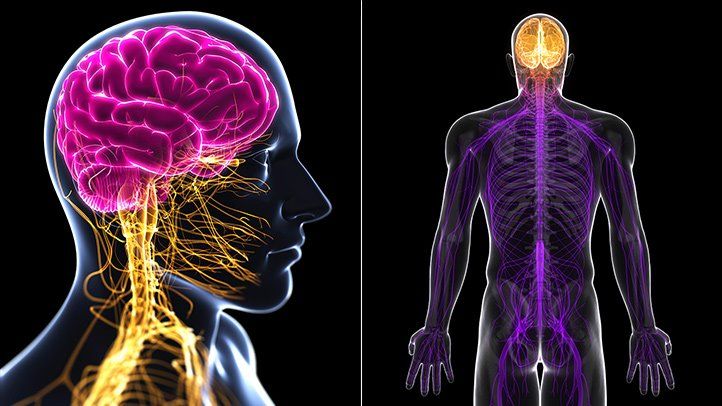Polyneuropathy Treatments and Definition.
“Polyneuropathy” is a very heavy term that can lead to confusion, due to the complex nature of the nervous system. What is it? What parts of the body does it affect? What bodily functions could be complicated? Definitions, types, and treatment management are bound to be found in this article, so if you wish to learn more about what Polyneuropathy is and Polyneuropathy treatment options are available, this is the article you are looking for.
What is Polyneuropathy?
First and foremost, what is Polyneuropathy? Before we can give you a clear reading of what it is, we need to learn a bit more about the basic components of the nervous system. In layman terms, we have two subtypes of structures within the Nervous System. The main one is the Central Nervous System (CNS), which consists of the brain, and the spinal cord. We could think of the brain as if it were the human equivalent of a computer CPU, which processes all of the collected data of the world that surrounds us, and what happens on the inside our the body in order to make the needed adjustments to function (or reach what is known as “homeostasis” in academic terms) properly. The spinal cord could be considered the fiber optic cable, which is in charge of collecting the data, and sending it to the CPU for further processing, and the execution of consequent adaptations.
The Peripheral Nervous System (PNS) are the branches of nerves that receive info and send it out to the Central Nervous System.
Polyneuropathy is when multiple of these branches’ peripheral nerves become damaged.
Different types Of Polyneuropathy and how do they affect people
When it comes down to types, there are several classes of Polyneuropathies, each have different characteristics.

The three main types include:
- chronic symmetrical peripheral neuropathy: a chronic form that develops over the course of several months.
- multiple mononeuropathy: where there is damage to at least two separate nerve areas of the human anatomy.
- Acute symmetrical peripheral neuropathy: which can be a rare type. This includes Guillain-Barré syndrome, a condition that can be fatal if left untreated.
Within these your can find subtypes of Polyneuropathies:
- Alcoholic Polyneuropathy.
- Sensory Polyneuropathy.
- Postherpetic Polyneuropathy.
- Demyelinating Polyneuropathy.
- Diabetic Polyneuropathy.
Polyneuropathy symptoms
Etymologically, the word “Polyneuropathy”, on its own, gives us plenty of information regarding some of the symptoms it might entail. “Poly-” comes from the Greek word polús, “many, much”; “Neuro-” comes from neûron, “sinew, tendon, cord”, and “-Pathy” comes from páthos, “suffering.” The Greeks in a nutshell sort of defined the whole experience.
People who suffer from Polyneuropathy in fact suffer, sometimes from a multitude of symptoms. This in turn makes treatment that much more difficult and pressing.
Some of the burdening symptoms include:
- Tingling sensation.
- Numbness on different parts of the body.
- Pinching sensations, as if pins and needles were pricking on the skin.
- Limb mobilization difficulties, and problems with other motor actions.
- Increased pain in different gradients, such as burning feelings.
- Pain-induced insomnia.
- Desensitization occasioned by nerve damage.
- Extreme tactile sensitivity.
- Lack of coordination.
- Increased falls due to lack of coordination and reduced environmental awareness.
- Changes on skin, hair, and/or nail appearance.
- Ulcers.
- Infections.
- Muscle weakness, spasms, and twitching.
What treatments are available for Polyneuropathy?
There are different possibilities for Polyneuropathy treatment. They are varied and luckily people have a wide range of options, both allopathic and homeopathic choices.

Treatments for milder cases:
- Pain medications can be an option for less severe scenarios. Over-the-counter pain medications may be adequate for mild symptoms. For more severe situations, prescription painkillers are also a viable option. The principal downside to painkillers is that the strong ones might induce addiction in patients, especially if there are hereditary components that signal this predisposition.
- Corticosteroids can also be used. They are anti-inflammatory drugs that can help relieve pain associated with nerve irritation and inflammation. They can be taken orally, or injected directly into the areas of the body where there is pain. The disadvantages of this type of medication is that there are different sides effects that might occur, such as Cushing’s syndrome.
- Anti-seizure medications: these meds are also used to help nerve pain. The side effects of these drugs is that they are known to cause drowsiness and dizziness.
Activities to decrease Polyneuropathy pain
There are different activities you can perform for Polyneuropathy management. Some are rather mild and in many cases don’t require a major upheaval in a person’s life. For examples some Polyneuropathy treatments that are easy to adopt are:
- Exercise to help reduce associated pain.
- Practical foot care, which will help with blood flow, and reduce nerve tingling.
- Blood flow and being aware of pressure points while maintaining static positions for too long.
- Avoiding smoking.
- Acupuncture.
For the best results, it is recommended to contact professionals as in Everest Rehab Hospitals, to create an individual treatment plan.
Importance of treatment management and recovery potential
It is of vital importance to get a proper diagnosis of the actual type of Polyneuropathy affecting a person. This can help reduce (or eradicate in less severe cases) the ailment. A careful revision of medical histories, physical, and neurological evaluations can go a long way in determining the type of Polyneuropathy. That, in combination with MRI’s, biopsies, and electro-diagnostic tests, give patients a better understanding of their condition. Even though in some cases it might not be completely cured, pain management in Polyneuropathy treatment can help change a person’s life and contribute to the patient’s improvement.
Knowing what tests should be done can help improve, or even completely cure (in very few cases, at least), a person’s general health and well-being. People with Polyneuropathy can enhance their everyday existence and boost their living standards by educating themselves and understanding their options.














Leave a Reply